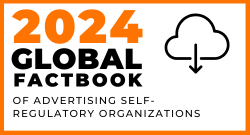Like advertising itself, ad self-regulation is most effective when conducted at the national level. The characteristics of a given self-regulatory system will depend on local factors such as existing cultural traditions, the business environment and legal requirements.
Basic principles
Despite national differences, some basic elements are typically common to Advertising Self-Regulatory Systems worldwide, such as:
- An independent and impartial self-regulatory body responsible for the implementation of the self-regulatory system and for ensuring that the system is – and is seen to be – impartial in the application and eventual review of the code;
- A code of standards or set of guiding principles governing the content of advertisements;
- A system for the adoption, review and application of the code or principles.
The Self-Regulatory Organization (SRO)
An SRO is an independent body (i.e. independent of government and of specific interest groups) with decision-making powers. Funded by the advertising industry, it has a practical responsibility to enforce advertising standards. It is impartial and deals with consumer complaints on a cost-free basis. Its decision-making processes and adjudications are transparent.
You can find out more about how Advertising Self-Regulation works in the International Guide to Developing an SRO.

